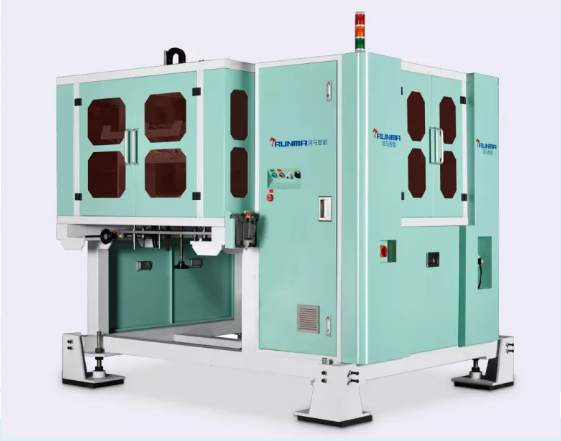First of all, in the aspect of raw material selection, enterprises should consider the toughness, fluidity and transparency of raw materials according to the characteristics of different products. Secondly, the adsorption mode between the label paper and the mold should be considered. Vacuum adsorption and electrostatic adsorption are two commonly used adsorption methods, but electrostatic adsorption is mostly used now. Electrostatic adsorption can be divided into indirect static addition and direct static addition. Indirect static charging means that an electrostatic device is placed during the journey of the labeler into the mold. When the label paper is delivered to this position by the manipulator, static electricity will be added to the label paper by the electrostatic device. This way not only affects the cycle, but also weakens the static strength of the label paper. The way of applying static electricity directly is completely different, and there is no need to pause in the middle. The fixture and die labeling cavity apply static electricity while contracting and releasing the label paper, and there is almost no delay. Finally, we will focus on the technical planning of injection molding machines, molds and manipulators, because they are the key in the process of integration of complete systems.
1. Injection molding machines
To manufacture plastic products with different requirements and specifications, the requirements for injection molding machines will change accordingly. Enterprises need to consider the requirements of capacity modulus, mold opening stroke, clamping force and firing rate of injection molding machines. In addition, the investment cost is also one of the influencing factors, and the price difference of injection molding machines of different brands is also relatively large. Among them, Demag injection molding machines stand out among many products because of their super-large capacity modulus (which can meet the production requirements of laminated products or large-capacity container products), super-high firing rate (which can ensure the firing rate requirements of thin-walled products) and high clamping force.
2. Mold
Mold is the core element of the complete system. This is because mold design, such as runner selection, waterway design and surface treatment, determines the selection of injection molding machines and the design of labeling machines. Reasonable design can indirectly reduce the cost of injection molding machines and labeling manipulators. Among them, MAZAK's CNC lathe, Charmilles' precision spark machine and Japanese original MAKINO V33i's 30,000-rpm machining center equipment can provide the development technology and the machining accuracy of thin-walled multi-cavity dies according to the different requirements of product wall thickness, shape and molding cycle.
3. Manipulator
The design of the labeling manipulator is closely related to the design requirements of customers for labeling paper. First, the customer needs to put forward clear requirements on the size, shape and expected labeling effect of the label paper, and then the enterprise puts forward the design scheme and confirms the mold drawing-confirming the selection of the jig according to the information such as the position and size of the mold cavity. In addition, the design of the manipulator should first consider its practicability. Simple actions don't need high speed, and the blind pursuit for speed will often increase the input cost of the complete system.

